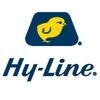Explore all the information on
Poultry behavior
Knowledge of the behaviour of the stock and the application of that knowledge in the care of the stock plays an important part in the maximisation of production efficiency of a poultry production enterprise. In addition, the management of the domestic fowl has received considerable attention over recent years from the community, particularly animal liberation groups, because of the way that commercial poultry management systems have intensified. As a consequence, the study of poultry behaviour is important to the unit manager, not only to ensure that the welfare of the birds and production efficiency are maintained but also to minimise the influence of what is often uninformed debate. Behaviour is the way that animals respond to the different stimuli they encounter in their environment. The stimuli may be from other birds, their environment, people or any other thing or occurrence. Aggression and feather pecking or plucking are the two most common behavioral problems in chickens.
Laying hens are female chickens raised for egg production. The egg production system in the US is currently undergoing a transition from conventional cages to cage-free housing systems. The number of cage-free housing has increased from 4% hens in 2004 to 28% at the end of 2020 (USDA-NASS, 2021). Cage-free systems provide space...
Comments : 0
Recommendations: 0
Introduction Several factors can influence animal production, which can be beneficial or harmful to each species. In addition to the ambience, nutrition and sanity, the genetic characteristics of the breeds/lineages also cause changes in the adaptation and performance of the animals (Azevedo, Fosse Filho, Pereira, Andrade, & Júnior, 2016). In the current market there are three genetic groups of poultry according to their ability to produce: heavy poultry, light laying...
Comments : 0
Recommendations: 0
I. INTRODUCTION In accepting the invitation to present a paper on laying hen welfare at APSS 2021, I thought that I would provide an overview of a special issue of Animal Production Science on layer hen welfare that will be published in early 2021. This special issue consists of 19 review papers on the welfare implications of: the production system; development, growth and production; husbandry and behaviour; and health. I had planned to report on the main findings of the...
Comments : 0
Recommendations: 0
Identifying individual birds that are suffering or that have compromised health and welfare is key to maintaining high standards of poultry care. Knowing your birds and when they are ill or in pain is imperative for identifying birds that need treatment or that might need to be euthanized....
Comments : 0
Recommendations: 0


New nutritional solution in heat stress management. <i>Ganoderma lucidum</i>: An ally to fight heat stress
Suggested link
Compromised leg health is a welfare and economic concern for meat chickens. Enrichment of the production environment via the provision of perches has been a focal point of research into reducing the prevalence of leg disorders in recent years. Despite inconsistent evidence of the effect of perches (Groves and Muir 2013; Phibbs et al. 2019), they are provided in almost two thirds of the Australian meat chicken industry, with 2.7 m perch/1000 birds required under the RSPCA Approved Farming...
Comments : 0
Recommendations: 0
In 2020, the poultry industry had a combined value of over $35.5 billion in the United States. Of that, $21.7 billion came from broiler chicken production (USDA-NASS, 2021). Over 9.22 billion broiler chickens were raised and brought to market though the year, making it the largest and most valuable sector of U.S. poultry production. With such...
Comments : 0
Recommendations: 0
Sickness behavior is an animal’s adaptive response to disease which aids in their recovery. When an animal is infected by a pathogen, an immune response involving immune cell and immune molecule activity is stimulated and sickness behavior results. Sick chickens are difficult to identify because they rarely show signs of illness before it...
Comments : 0
Recommendations: 1
The Poultry Extension Collaborative (PEC) brings you the webinar "Bugs, Biome and Breeding: Improving Laying Hen Welfare" on May 17th, from 9 to 12 am EST, via Zoom.
Attendance is free and you can register ...
Comments : 0
Recommendations: 0
Chickens make different sounds for a plethora of reasons. Determining the reasons behind vocalizations and understanding how chickens use them is a great way to gain insight about their behavior. Some of the most common chicken vocalizations are: A rooster's crow A hen's "food call" Alarm calls A hen's post laying...
Comments : 1
Recommendations: 1
Environmental factors encountered during pre-natal life influence the developmental trajectory of a developing embryo, altering post-natal phenotypes (Du et al., 2015). Maternal nutrition and stress directly influence the maternal environment, with both factors prominent in the broiler breeder industry. Broiler breeders are feed restricted to improve reproductive output; however evidence suggests hens suffer from chronic stress due to prolonged hunger (Mench, 2002). Feed restriction in...
Comments : 0
Recommendations: 0
1. Introduction Contact dermatitis is an inflammation and irritation of the skin due to contact with an irritant or allergen. A common type of contact dermatitis in broiler chickens is footpad dermatitis (FPD), with necrotic lesions on the plantar surface of the central footpad [1]. When these lesions are left untreated, and environmental conditions remain the same or deteriorate, lesions will worsen, eventually encompassing the entire footpad, including the toes [2]. The...
Comments : 0
Recommendations: 0
On-Farm Welfare Assessment: Laying Hens In this newsletter we will provide an overview of animal-based indicators that can be used to assess laying hen welfare on the farm, using measures from the Welfare Quality® Assessment protocol (2009). The...
Comments : 0
Recommendations: 1


Innovative Directions in Aflatoxin Testing Point to Measureable Gains in Quality Of Lab Data
Suggested link
Identifying behavioral signs is key to managing heat stress in poultry Every year, high summer temperatures have important effects on poultry health and welfare. Heat stress occurs when poultry cannot adapt to high environmental temperatures and need to expend energy to...
Comments : 6
Recommendations: 2
Damaging pecking, or injurious pecking, is a major animal welfare concern. There are various forms of injurious pecking, including injurious feather pecking, feather picking, cannibalism, and aggressive pecking (see Table 1 on page 2). Not all species or breeds of birds perform...
Comments : 0
Recommendations: 0
1. Introduction In free-range and aviary housing systems, individual hen behavior can vary significantly, such that, some hens rarely access the outdoors while others utilize the range regularly [1–4]. Free-range and aviary housing systems provide hens with horizontal and vertical space, allowing for various choices, opportunities, and interactions; including dust bathing, sunbathing, perching, and exploration which are believed to improve hen welfare [5,6]. However, not...
Comments : 0
Recommendations: 0
Introduction Nigerian Agricultural sector is identified with the provision of food and nutrition while poultry production is responsible for 19% of the meat supply (SAGTAP, 2012). The value of the commercial poultry industry in Nigeria is estimated at N80 billion ($600 million) and is rated as the most industrialized component of the livestock Sub-sector. Over 25 million people are employed directly and indirectly in the...
Comments : 5
Recommendations: 0
Introduction Commercial egg production is associated with various stresses decreasing productive and reproductive performance of layers. It is proven that most of stresses in poultry production (technological: chick placement, vaccinations and transfer to breeder houses; environmental: heat stress, high ammonia, etc.; nutritional: mycotoxins, misbalances of vitamins, minerals, amino acids, etc.; or internal: bacterial and...
Comments : 13
Recommendations: 5
Dear experts! It has really been very upsetting layer rearing for us for this season due to vent picking. The deaths due to vent picking is higher than deaths due to any other problems or diseases. The birds started picking vent from around 5 weeks of age and has not stopped till now (73 weeks at present). We are well aware that vent picking has multifactorial causes and after seeking different advices from different veterinarians, following adjustments were made.
1) Stocking density...
Comments : 10
Recommendations: 0
This operation is normally carried out for two main reasons: to prevent feather pulling and cannibalism to reduce feed wastage Beak trimming is a delicate operation: only specially trained personnel should perform it. When it is improperly done, the result may be birds having difficulties with...
Comments : 2
Recommendations: 0
Appropriate rearing is essential for ensuring the welfare and productivity of laying hens. Early experience has the potential to affect the development of fearfulness. This study tested whether rearing in aviaries, as opposed to cages, reduces the fearfulness of laying hens after transfer to furnished cages. Fear responses were recorded as avoidance of a novel object in the home cage. Lohmann Selected Leghorns were reared in an aviary system or conventional rearing cages and then transported...
Comments : 0
Recommendations: 0


.jpg&w=3840&q=75)




.jpg&w=3840&q=75)





.jpg&w=3840&q=75)











